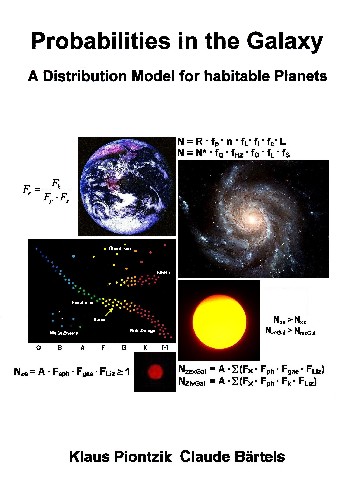This results in the following
probabilities for the distributions of solar-like star
systems with habitable planets:
| Symbol |
Rate |
Factor |
Designation |
| |
|
|
|
| Fs |
7:25 |
0.28 |
G-Stars |
| Fp |
201:14,000 |
0.014,357 |
G-Stars with
Planets |
| Fh |
10:603 |
0.000,066 |
Habitable Zone
around G-Star |
| Fg |
1,212:3,286 |
0.368,837 |
approximately
earth great planets |
| Fa |
51:130 |
0.392,307 |
approximately earth-like
planets |
| Fe |
1:100 – 1:10 |
0.01-0.1 |
earth-like planets |
| |
|
|
|
| Fsph |
1:15,000 |
0.000,066 |
Habitable Zone around
G-Star |
| Fgae |
1:691 – 1:69 |
0.0014-0.014 |
Earth similarity |
Statistically, about ten "Earths 2" were needed
to obtain significant probabilities.
This would require the investigation of 69 to 691 times
the number of stars that have been recorded by the Kepler
satellite so far.
In 2013, 150,000 star systems were investigated with the
Kepler telescope. Statistically, this is a data
population large enough to obtain significant numbers. It
can be assumed that with further investigations with
larger populations and extended measuring methods, the
determined probabilities (up to Fe)
for sun-like systems will change only slightly.
If the data is sufficiently significant, the probability
factors are transformed into simple distribution or
frequency values, making the probability model a simple
distribution model.
Starting from the current speed at which exoplanets are
recorded, however, it may take several years or decades
before empirically significant figures are available.
The time until the discovery of a second Earth is
even a measure of the frequency: the longer it
takes to find an "Earth 2", the lower is the
probability of Fe
for a second Earth.
|
